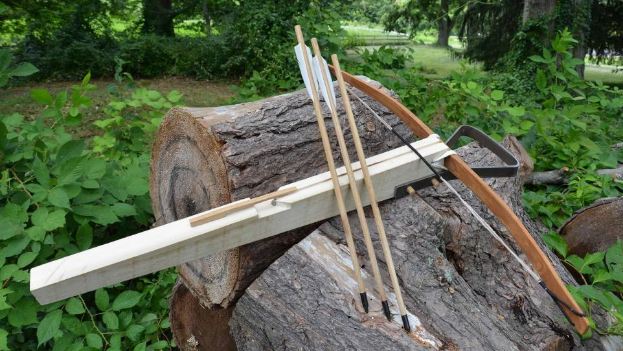While today’s technology has its place it is always a good idea to be prepared. Check out these five old-fashion skills. If the grid ever really goes down, learning traditional skills may be a must!
Tan Hides With Brains
Before the invention of chemical tanning to create leather, animal skins were subjected to all kinds of strange concoctions to degrease and soften them. Urine, wood ashes, tree bark acid, and even toxic substances like mercury have been employed over the centuries to tan skins into useful leather. These all have their uses, but few natural substances have had such a long and successful track record (or are as odd to work with) as animal brains to tan hides. How does it work? Brain tissue is full of very fine oils that condition and soften the animal skin, as long as the skin is stretched and moved during the drying process. If you set out the skin to dry, no amount of brains are going to break down the glues that naturally set up in the skin. Instead, the result will be rawhide, which is great for the dogs to chew on, but not so great for making clothes. Keep the hide moving and stretching as it dries, and you will get something akin to chamois cloth.
Build a Trap Line
Trapping was a common means for American mountain men to collect valuable furs and feed themselves at the same time. Traps can be purchased or hand built today, just as they once were. Traps should be de-scented to remove human scent and the proper baits should be selected to attract your target species. Once you are ready to set out your traps, it’s time to create a trap line. This is typically arranged as a circuit that you can walk, to visit your traps and to collect your game. Depending on the animals you are trapping, this line may run down a creek, up a ravine, along a cliff base, or beside some other natural feature which funnels the animals into a smaller area. Of course you want your traps to be successful, but you should also be worried about the safety of your traps. Set them up in a place (or mark them in such a way) that people and pets do not become injured by the trap. Check your trap line daily.
Make Your Own Medicine
To our forebears living in remote areas, the local wild plants had to serve double-duty as food and medicine. Making one’s own medicine was a well-known practice centuries ago, but it has fallen into obscurity since the advent of the corner drug store. Dig a little, though, and you’ll find the old connections are still there. Many of our modern medicines trace their history back to where they were first discovered in wild plants. Even the word “drug” is anchored in the past: It comes from the old Dutch word “droog,” which means dried plant. To whip up the most basic historical plant medicine, first positively identify yarrow (Achillea millefolium) or plantain (Plantago major). (FYI: That’s yarrow in the photo.) Crush either or both of these wild plants into a green paste and apply it to cuts, scrapes, burns, and scratches. This medicinal form is called a poultice, and it’s surprisingly effective at infection prevention and speeding up the healing of wounds.
Learn Your Lashings
In order to build certain shelters (like wigwams) and most camp furniture, you’ll have to learn your lashings. The folks living a pioneer life on the American frontier knew all about lashings. By joining sticks to other sticks, they were able to create fences to keep in livestock, build handy structures for camp and farm, and even erect lookout towers to keep an eye out for hostile neighbors. One of the most essential lashings is the square lashing, which joins two perpendicular sticks together.
Make Some Weapons
On average, ancestral life was short and harsh. Don’t ever get a romanticized version of history in your head. Our predecessors rarely felt safe. There was always a group nearby who either wanted their stuff or wanted them gone. If armaments were in short supply, our progenitors had to make them. Some of the easiest weapons to fabricate with limited tools and supplies are archery weapons like bows and crossbows. These weapons can be built and repaired in the field, just like they have been for thousands of years.
A few surprises up above and some great tips and tricks!
Learning to live off the land, using devices our pioneer ancestors used may seem a worse case scenario for most but, if the SHTF as many suspect, you will be set and may thrive, unlike your neighbors.
And, as we have reminded, learning such skills and using them to barter with your neighbors is a wise and solid investment! To learn more about these important skills, visit Outdoor Life.
Featured Image via Outdoor Life
